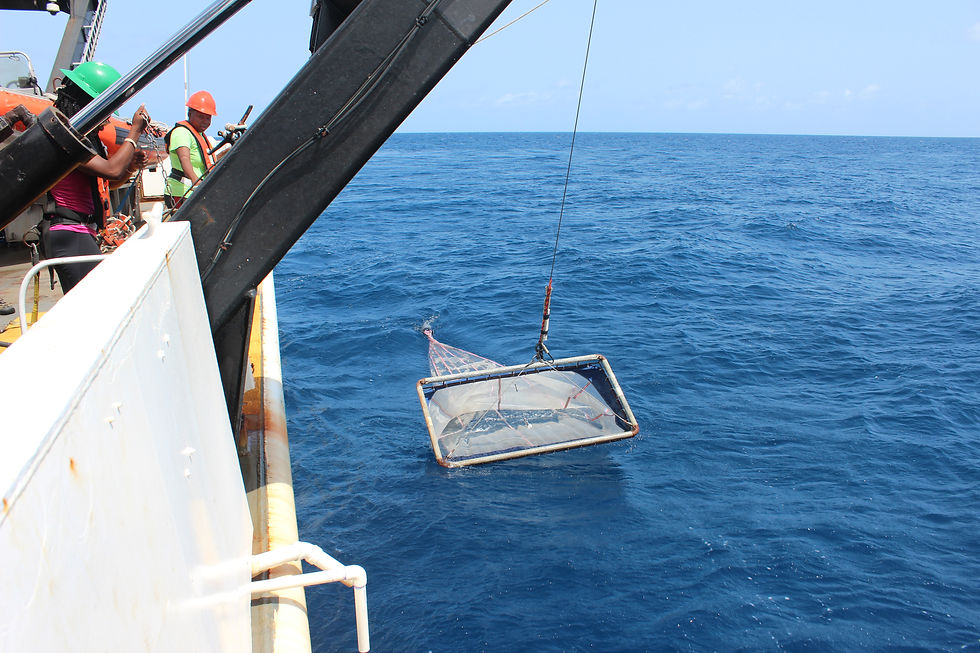Work Work Work Work Work … the S25
- L. Denson
- Jun 11, 2016
- 2 min read
It’s 3:00 in the morning and I’m about to have dinner. I definitely needed to eat after back to back stations. We’ve been going since we started our shift. It goes like this: a twenty minute transit to the station, mini bongo, S25, CTD then Mochness (this should be called the Monster). Another twenty minute transit and we do it all again. It seems like every time we pull the last piece of equipment out of the water we are rushing to do it again at the next station. Each piece of equipment samples different sizes of planktonic (small/drifting) organisms at different depths at different depths.
For the next few day I am going to blog about each piece of equipment separately so check back for updates. Today’s featured equipment is the S25 also known as a neuston net. This instrument has a large metal rectangular frame with a large net which leads to a collecting bucket known as a cod end. Two years ago we took the net down to 10 meters because that is where they believed Bluefin tuna were living. This year we are sampling at 25 meters, hence the “25” in “S25.” This year they are looking for parrot fish larva which are believed to reside around 25m which is common for a lot of larvae.

Before we put the net in the water we read the numbers off of an instrument known as the flow meter which is suspended in the middle of the net. The number on the flow meter tells us ow many volumes of water we filtered. With this number we can figure out how many larvae we will find per volume of water. The net is then put in the water and pulled along by the boat for an average of 10 minutes at a steady speed.




When the net comes back on board, the flow meter is read, the cod end is rinsed, drained and the organisms are put into a jar. It is sometimes sorted by someone looking for fish right here in the lab on board but most times it is preserved in ethanol and looked at on shore (this is called sorting). In the lab on shore they look at the different groups or species of fish they find and answer different questions. For instance, they can test if different types of fish are found near different water features. These features can include warm or cold temperature abnormalities that can be seen in something called an ocean eddy. Eddies are like large swirls of water in the ocean that can be either turning clockwise or counter clockwise and can move across the ocean. These eddies can transport pools of water with some unique features into areas where the water features are very different. This is a very simple definition of an eddy but eddies are very complicated features. Too complicated for this blog post.










Here are links to learn more about neuston nets and eddies.
Peace,
LaTreese



















Comments